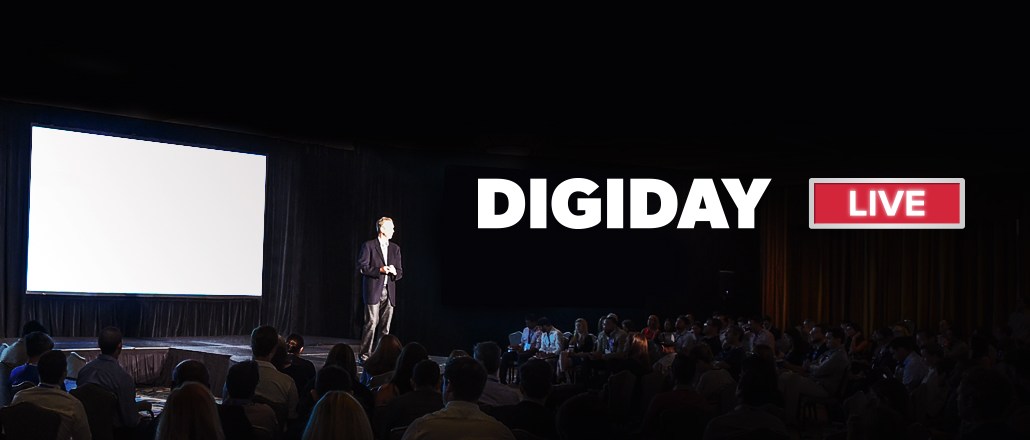SwellShark’s Nick Pappas: Advertisers are getting more interested in OTT and connected TV inventory

Subscribe: iTunes | Stitcher | RSS | Anchor
The stakeholders in the future of TV are watching the cord-cutting trends closely, and brand are now wondering if more of their ad spend should go to OTT and connected TV, according Nick Pappas, CEO at SwellShark. It’s a lucrative proposition as inventories have started opening up more broadly.
“One things that made an impact is that some networks like Scripps put things into DSPs so you can buy connected TV video impressions through a DSP,” Pappas said at the recent Digiday Video Marketing Summit held in Nashville. “It allows us to size the audience within certain networks and providers. Across the board, a lot of networks have opened up the inventory, made it easier and more readily available. The DSP options are so much broader than a year ago, when we bought a fraction of the inventory we buy today through our primary video DSP partners. Roku keeps expanding their offerings. Amazon Fire TV provides more options in their space as well.”
But it’s still too early to completely pivot away from linear TV. Pappas discussed the tests on OTT and connected TV services, the opportunity in incorporating them in the ad spend, the challenges and more. Edited highlights below:
Data sharing is a challenge.
“Every partner does things in a different way and provides a different look. When you combine all these pieces, it gets difficult. Everyone has their own limitations on data and they have privacy policies that keep them from sharing certain data. It becomes a challenge for us to look through. Some partners are transparent and forthcoming, who allows us to see data.”
The scale needs to be big enough.
“The promise we’re looking for in connected TV is to get better television and better look at the audience and get more specific with the person you want to talk to and get the incremental reach. It’s hard to keep that universal across the board. Hulu has about 20 million subscribers but 50 million viewers. That’s the right level because that’s where we can start applying data technologies and then start segmenting out. That’s transformational. When you’re sitting with 5 million or 10 million viewers, as soon as you start diving down into a specific demo, it’s not meaningful enough to have an impact on a brand.”
Linear TV still wins.
“Some clients ask if they need to do linear TV anymore? Cord-cutting and light TV viewing is a thing but it’s about scale and proportion and there’s a lot of people still watching TV. Every client asks about it. Probably, A third of our clients are using connected TV as a part of their media mix. If your research tells you your client has a movie-driven audience and you should sponsor free movies on Pluto for a month, there are reasons to jump into it. For the most part, the scale is still a bit small and not primary. For a lot of our clients, we’re still not maximizing what we can do on connected TV and OTT and some addressable platforms. Yes, they’re nice tests to have, we can’t afford to do everything all of the time but it’s nice to keep an eye on.”
Find opportunities to test on OTT and Connected TV.
“We’ve tested a few different attribution models. What’s done best for us as individual testing is control test with an OTT-specific campaign. There’s a somewhat limited scale on OTT. If you’re doing within the mix of everything else, we’ve found out that there is a time period where we have a benchmark for performance based on seasonality and then providing a key period of activity to see what the impact is. We turn that into a bespoke model. We had one client that saw tremendous lifts in in-store and online sales when we were doing OTT campaigns. It’s working.”
More in Future of TV

Future of TV Briefing: Media Rating Council identifies ‘the problem of our time’ for measurement
This week’s Future of TV Briefing looks at how the industry’s measurement arbiter is looking at ensuring measurement systems are able to reliably identify audiences across channels in a privacy-compliant manner.

Future of TV Briefing: Making sense of the TV industry’s latest measurement moves
This week’s Future of TV Briefing looks at the recent developments in the TV measurement market on the eve of this year’s upfront negotiations.

Future of TV Briefing: How Axios Entertainment is looking to expand its original programming business
This week’s Future of TV Briefing looks at how Axios’s entertainment division has its eyes on moving physical production in-house and getting into scripted programming.





